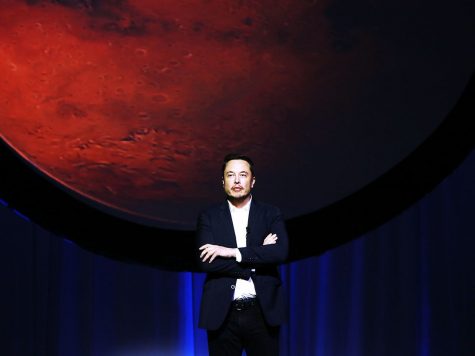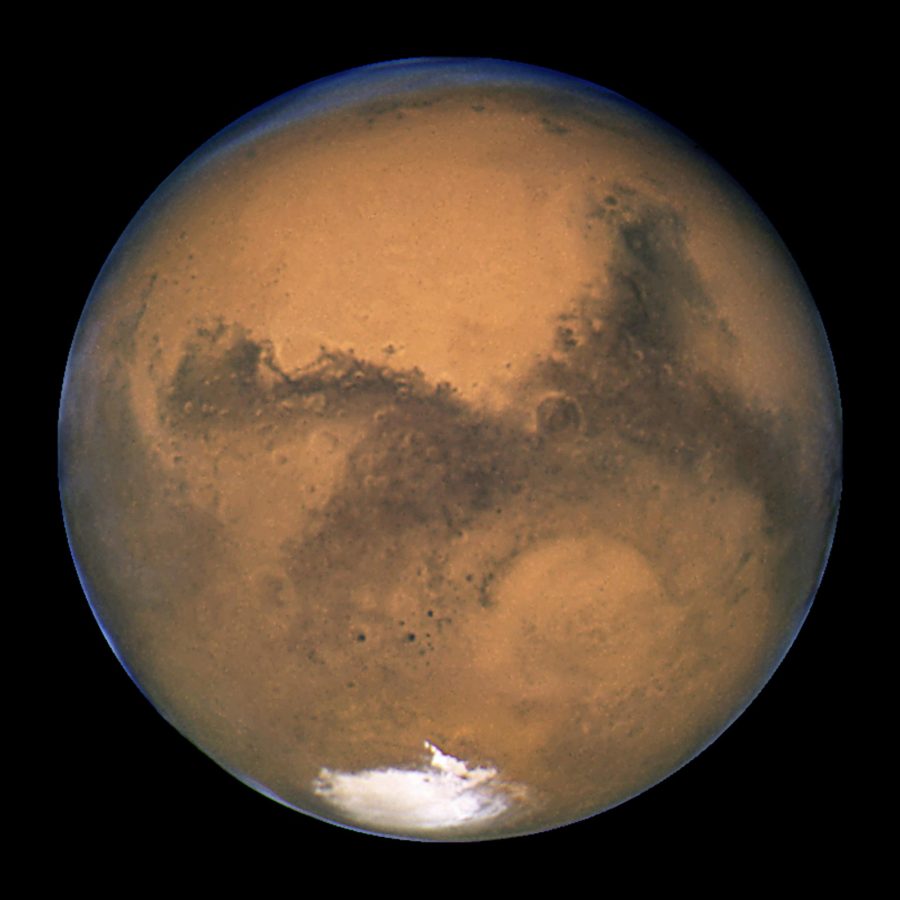Race To Space
Space, the final frontier. In 1968, Neil Armstrong was the first man to set foot on the moon. Since then, 12 people have followed in Armstrong’s historic, small steps and giant leaps; the last one took place in 1972. Since then, the American and international space programs have ground to a slow halt. With the lack of government funding, NASA has been sidelined, making way for other private space companies such as SpaceX to lead the exploration. It has become SpaceX’s primary mission to put a human on Mars and return them successfully home to Earth—and this prospect is closer than you might imagine.
SpaceX first gained recognition in 2015 when they successfully landed their orbital rocket Falcon9 back on earth after delivering 11 satellites for several commercial companies. Reusable rockets have since changed the world of space travel as we know it. Reusable rockets account for a huge sum of money that can be saved from having to build an entirely new booster every launch . SpaceX hopes to use this technology to propel their quest for colonization of Mars.
. SpaceX hopes to use this technology to propel their quest for colonization of Mars.
Recently, SpaceX CEO and founder Elon Musk unveiled his plan to build a colony on Mars in the 67th annual International Aeronautical Congress in Guadalajara, Mexico. Musk called upon deep-pocketed futurists and Washington string pullers to aid him in his pursuit of the Red Planet. SpaceX is a privately funded company, so the future of its endeavors relies solely on the funding from its generous sponsors, as well as the profit they earn from delivering satellites to high orbit.
Musk stated that, right now, a round-trip flight to Mars could cost upwards of 10 billion dollars. The same amount of money could buy you a couple of blocks within Manhattan’s financial district. However, when the proposed SpaceX Interplanetary Transportation System (ITS) is functional, traveling to Mars could be as comparatively affordable as $200,000.
The ITS is a revolutionary capsule that is a staggering 40 stories tall. This space tube would escape Earth’s gravity with 42 Raptor acceleration rockets. Once the vessel exceeds the atmosphere and reaches orbital height, the initial booster will detach and maneuver itself back onto the launching pad from whence it came. The booster could then be reloaded with more fuel. Then, it would meet the ITS in orbit and transfer the fuel to its six vacuum-optimized engines. It would take several trips to completely top off the capsule. The ITS could set its course for Martian soil and be there within 3 months thanks to the six boosters that would accelerate the ship to about 19,014 mph.
The aspect of this proposal that truly makes the whole venture feasible is the reusable refueling rocket. It is almost impossible to send a capsule of that size into orbit with the all the fuel necessary to make the journey to Mars. By reusing the booster, SpaceX can save staggering amounts of funding that can be later implemented into the safety and comfort of the passengers. Comfort products such as a pizza making machine, movie theater, and other zero-G shenanigans.
Mars travel can be intimidating after weighing all the risks and the distance that needs to be traveled, but enthusiasts of this exploration have been waiting for an opportunity such as this one. Many of the skeptics are fearful of losing aspects of their lives on Earth if they were to make the journey to the Red Planet. Air Academy junior, Amanda Smith, commented on Mars colonization, saying, “I think that those who are willing to give up things in their life on Earth are the type of people that would be willing to travel there. But I would not go myself.”
On the other end of the spectrum, over 200,000 people have already pledged their bid for a ONE-way ticket to Mars in the controversial NASA Mars program. These individuals are more curious about life on Mars than their Earthly relationships and belongings. One such applicant, Ken Sullivan, would be leaving behind his wife and two kids if he were to be chosen for the “Journey of a Lifetime.” Needless to say, SpaceX would have no shortage of applicants for their round-trip Mars adventure.
Elon Musk and SpaceX are at the forefront of space innovation. An entire community of people is working tirelessly to see that this dream becomes a reality. Every day, they get one step closer. The entire process begins, however, with one person saying that they believe. Hopefully, SpaceX’s enthusiasm will see a ripple effect across the world and the Red Planet will soon be home to a colony of brave humans. Mars is the next grand prize for our species, and we are beginning to see the light illuminating from the end of its seemingly endless tunnel.

What's up? My name is Ryan Self, and I live in southern Colorado. I am a junior here at Air Academy High, and I'm the co-creator of the humor column "Half-Wit...


















Robert Corl • Nov 2, 2016 at 12:24 pm
Elon Musk is like the real life Tony Stark; he’s awesome. Hopefully his plans to reach Mars are successful!
Joseph Cordaro • Nov 2, 2016 at 12:19 pm
Great Story Ryan! That seems to be a good blue print for the huge plan of setting foot on mars. I wonder what Musk’s plan will be for life support for humans and how many the trip will take.
Ryan Self • Nov 2, 2016 at 12:18 pm
What a story Ry!
kennedy jamieson • Nov 2, 2016 at 12:18 pm
Great article Ryan, lets take a trip to Mars together!